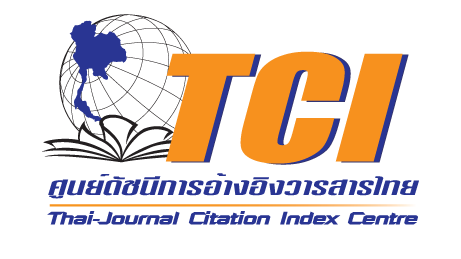Nursing Department of QSM H:A Suitable Timeframe for Transitioning to Higher Positions
DOI:
https://doi.org/10.14456/ncrj.2024.5Keywords:
Career Development, Performance-Based Evaluation System, Development Planning SystemAbstract
This case study examines the Nursing Department of Queen Savang Vadhana Memorial Hospital (QSMH) and focuses on the suitable timeframe for transitioning to higher positions. The case examines the existing practice of promoting nurses based on seniority and the difficulties it presents for the career progression of skilled nurses in terms of career development. This study aims to stimulate the development of an evaluation system that offers fair opportunities for career advancement based on merit and competence.
The case study presents the rationale for transitioning to a performance-based evaluation system and its potential benefits in a large-scale hospital setting.It discusses the importance of effective performance management and career development initiatives in the nursing department. Additionally, the case studyexplores the factors contributing to the high turnover rate among nurses, such as inadequate retirement pension, lower compensation and benefits, and unclearemployee development opportunities.
To address these issues, the case study proposes a phased approach for transitioning to performance-based evaluations. It outlines the steps involved inthe new development planning system, including self-assessment, reality check,goal setting, and action planning.
Overall, this case study provides insights into the challenges faced by the Nursing Department of QSMH in terms of career advancement and offers recommendations for implementing a performance-based evaluation system. It offers valuable lessons for healthcare organizations seeking to enhance career development opportunities and create a more sustainable and rewarding work environment for their nursing staff.
References
Aburumman, O., Salleh, A., Omar, K., & Abadi, M. (2020). The impact of human resource management practices and career satisfaction on employee's turnover intention. Management Science Letters, 10(3), 641-652.
Alice, K., Sona, E., & Hamid, H. (2018). ADKAR Model and Nurses' Readiness for Change. Journal of client-centered nursing care, 4(4), 203-212. https://doi. org/10.32598/jccnc.4.4.203
Al-Suraihi, W. A., Samikon, S. A., & Ibrahim, I. (2021). Employee Turnover Causes, Importance and Retention Strategies. European Journal of Business and Management Research (EJBMR).
Bakari, H., Hunjra, A. I., & Niazi, G. S. K. (2017). How does authentic leadership influence planned organizational change? The role of employees' perceptions: Integration of theory of planned behavior and Lewin's three step model. Journal of Change Management, 17(2), 155-187. https://doi.org/10.1080/146 97017.2017.1299370
Baran, B. E., & Woznyj, H. M. (2020). Managing VUCA: The human dynamics of agility. Organizational dynamics.
Chanana, N., & Sangeeta. (2021). Employee engagement practices during COVID-19 lockdown. Journal of Public Affairs, 21(4), e2508.
DeNisi, A. S. (2020). HR5: human Resources. Boston, MA: Cengage Learning.
Dessler, G. (2020). Human Resource Management (Sixteenth Edition, Global edition. ed.). Pearson.
Guan, Y., Deng, H., & Zhou, Χ. (2020). Understanding the impact of the COVID-19 pandemic on career development: Insights from cultural psychology. 119, 103438
Ni, Y. X., Wu, D., Bao, Y., Li, J. P., & You, G. Y. (2022). Nurses' perceptions of career growth: A qualitative descriptive study. Journal of Advanced Nursing, 78(11), 3795-3805. https://doi.org/10.1111/jan.15376
Noe, R. A. (2021). Human resource management: Gaining a competitive advantage (Twelfth Edition. ed.). McGraw-Hill Education.
Paramitha, T. A., Tobing, D. K., & Suroso, I. (2020). ADKAR model to manage organizational change. International Journal of Research Science and Management, 7(1), 141-149.
Queen Savang Vadhana Memorial Hospital. (2022). Hospital profile Retrieved from https://somdej.or.th/about-1/
Queen Savang Vadhana Memorial Hospital. (2023). Turnover rate report.
Sadri McCampbell, A., Jongpipitporn, C., Umar, I., & Ungaree, S. (1999). Seniority-based promotion in Thailand: it's time to change. Career Development International, 4(6), 318-320. https://doi.org/10.1108/13620439910287997
Shet, S. V., Patil, S., & Chandawarkar, M. R. (2019). Competency based superior performance and organizational effectiveness. International Journal of Productivity and Performance Management, 68(4), 753-773.
Stone, R. J., Cox, A., Gavin, M., & Carpini, J. (2023). Human Resource Management. John Wiley & Sons.
Sugiarti, E. (2022). The influence of training, work environment and career development on work motivation that has an impact on employee performance at PT. Suryamas Elsindo Primatama In West Jakarta. International Journal of Artificial Intelligence Research, 6(1), 1-11.
Varma, A., Budhwar, P. S., & DeNisi, A. (2023). Performance management systems: A global perspective. Taylor & Francis.
Weng, Q., & Zhu, L. (2020). Individuals' career growth within and across organizations:
A review and agenda for future research. Journal of Career Development, 47(3), 239-248.

Downloads
Published
How to Cite
Issue
Section
License
Copyright (c) 2025 NIDA Case Research Journal

This work is licensed under a Creative Commons Attribution-NonCommercial-NoDerivatives 4.0 International License.




